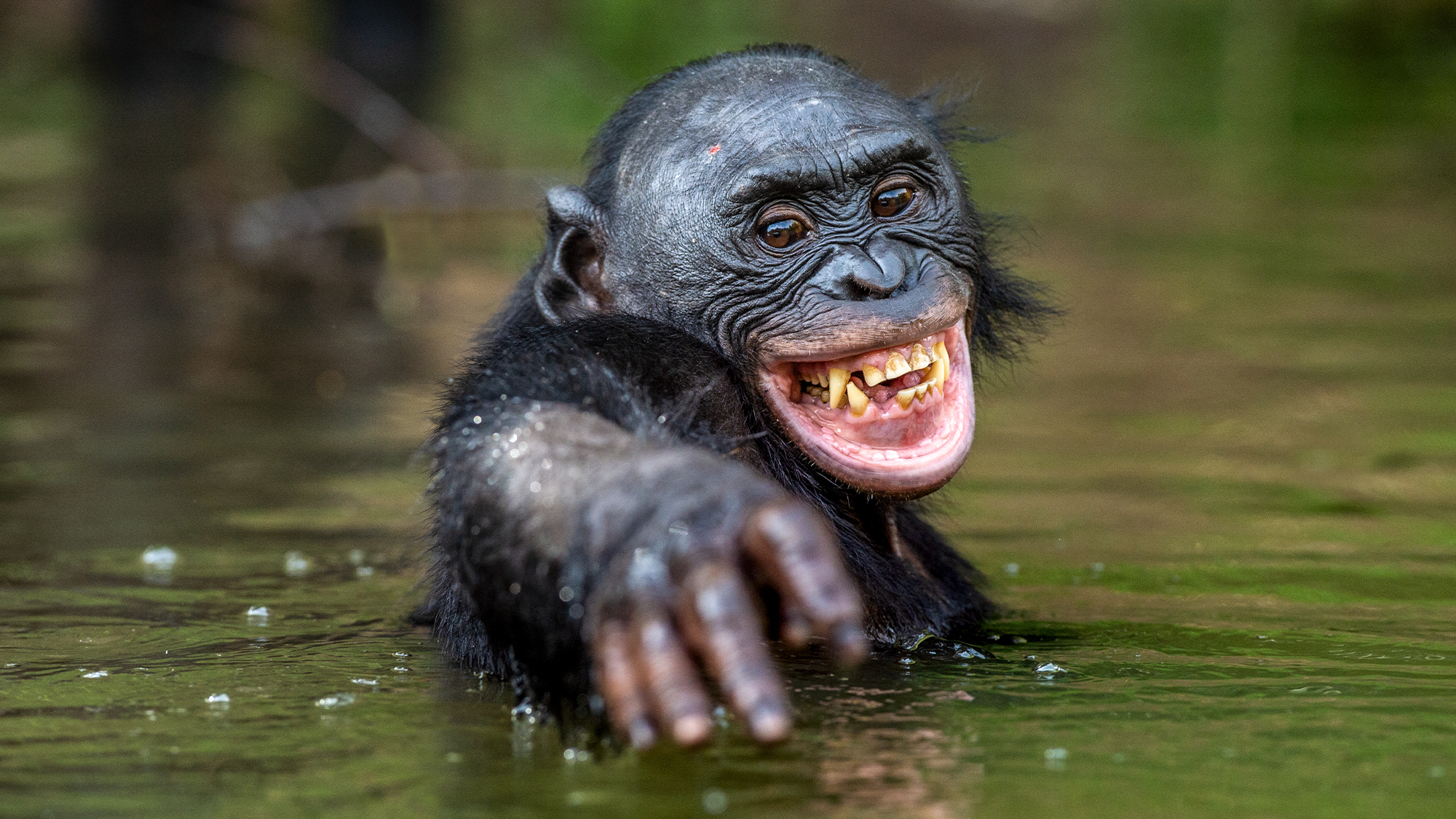

Even before most human babies can say “mama,” they can tease. This behavior is important, because playful teasing is a critical part of human interaction and development. A baby must have enough social intelligence and be able to recognize and appreciate that their actions can mess with another person’s expectation of what’s coming next.
[Related: The best science jokes to make you laugh, groan, and Google.]
Teasing can start when human babies are as young as eight months-old, but we are not the only primates who can do it. This silly behavior has now been documented in four different species of great ape. These basic forms of humor likely evolved in the human lineage at least 13 million years ago. The findings are described in a study published February 13 in the journal Proceedings of the Royal Society B Biological Sciences.

“Great apes are excellent candidates for playful teasing, as they are closely related to us, engage in social play, show laughter and display relatively sophisticated understandings of others’ expectations,” Isabelle Laumer, a study co-author and primatologist and cognitive biologist affiliated with the University of California, Los Angeles (UCLA) and the Max Planck Institute of Animal Behavior, said in a statement.
Play and provocative non-compliance
Early teasing generally involves an infant pulling off some kind of surprise. Babies can playfully offer a toy and then take it back. Psychologists call this behavior provocative non-compliance. Developmentally, it shows that a baby is beginning to understand that there are social rules or expectations that can be violated.
In the study, a team of scientists from institutions in Germany and the United States observed captive orangutans, chimpanzees, bonobos, and gorillas. They analyzed spontaneous social interactions that appeared to be playful, mildly harassing, or provocative. The team watched and noted the teaser’s actions, bodily movements, facial expressions, and how long the target of the teasing responded. They also assessed what the teaser’s intention could have been by searching for evidence that the behavior was directed towards a specific target, that the behavior continued or intensified, and that teasers waited for a response from their target.

All four species showed intentionally provocative behavior and these actions were frequently accompanied by characteristics of play. The team identified 18 distinct teasing behaviors, including tickling, poking, hair pulling, and hiding under an object. Many of these behaviors appeared to be used to get response from the target or at least get their attention.
“It was common for teasers to repeatedly wave or swing a body part or object in the middle of the target’s field of vision, hit or poke them, stare closely at their face, disrupt their movements, pull on their hair or perform other behaviors that were extremely difficult for the target to ignore,” study co-author and UCLA and Indiana University anthropologist and linguist Erica Cartmill said in a statement.
Primate ‘playface’
While the playful teasing took many forms, it differed from general play in several ways. According to the authors, great apes playfully tease in a more one sided way, where it is often coming from the teaser and is rarely reciprocated.
[Related: Adolescent chimpanzees might be less impulsive than human teens.]
“The animals also rarely use play signals like the primate ‘playface,’ which is similar to what we would call a smile, or ‘hold’ gestures that signal their intent to play,” said Cartmill.
The apes’ playful teasing primarily happened when they were relaxed. It also typically involved a one-sided provocation, where the teaser looked right at their target’s face to wait for a reaction. The authors note that primatologist Jane Goodall and others in the field mentioned similar behaviors in chimpanzees several years ago, but this study is the first known to systematically study playful teasing.
“From an evolutionary perspective, the presence of playful teasing in all four great apes and its similarities to playful teasing and joking in human infants suggests that playful teasing and its cognitive prerequisites may have been present in our last common ancestor, at least 13 million years ago,” said Laumer.
